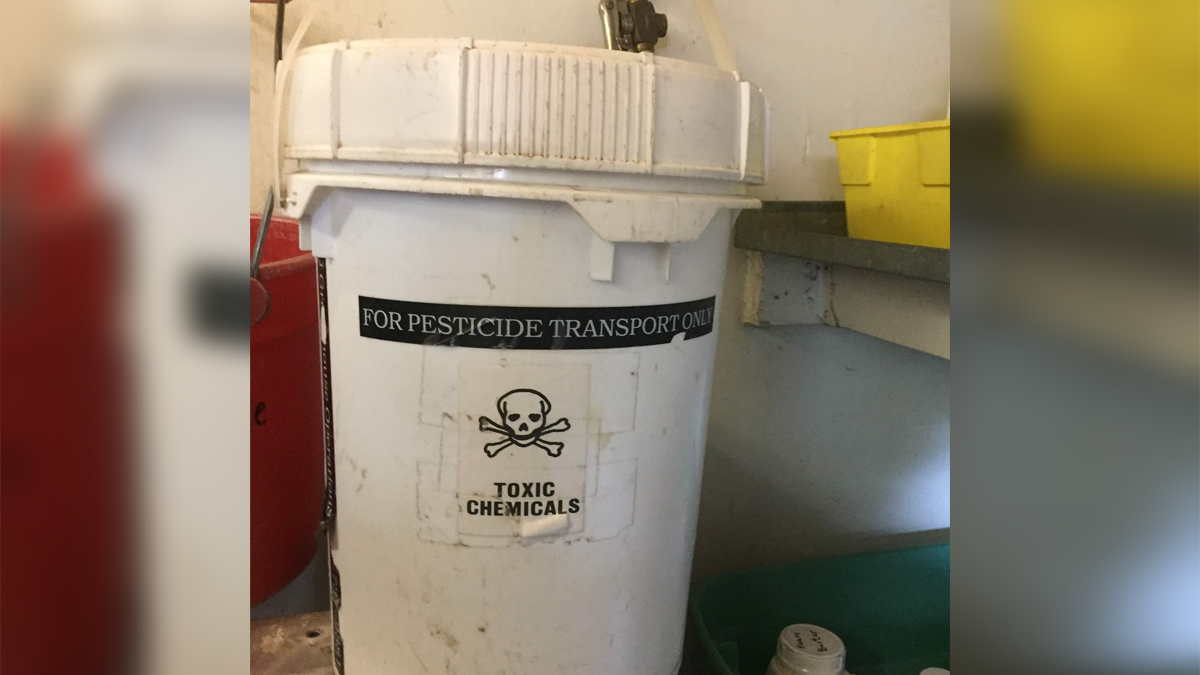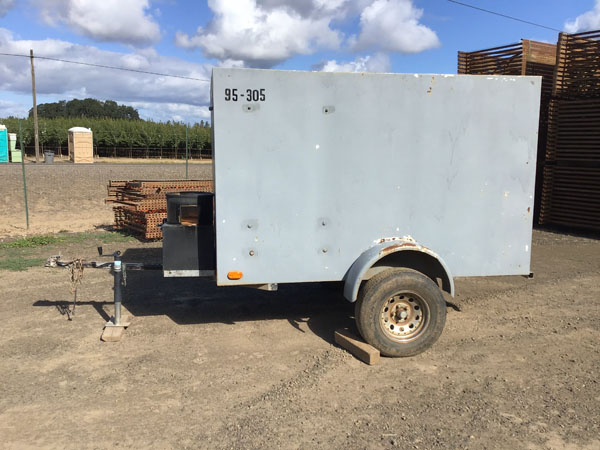
Photo by: Kit Galvin
 Take note
Take note
Aim to bring all necessary supplies and products to the target area. Select the best transport method based on the distance between mixing and loading area to the target site. Use designated buckets with screw-on lids that prevent spills for short distances. Make sure to designate buckets to serve as transport buckets. For large distances use a transport trailer with the products in the back. Another option is to store items in a pesticide transport container and place the transport container on the back of a truck. No matter the transport method remember to place all the supplies you will need to handle the pesticides before leaving the mixing and loading area.
 Idea...
Idea...
A greenhouse supervisor and coworker thought of the idea of using transport buckets after attending a pesticide training. They first used open buckets, however, they were concerned that items would spill during transport so screw-on lids were added to the buckets.

 Alert
Alert
Do not swap transport buckets between facilities.
 Setup & use
Setup & use
- Label buckets with screw-on lids with its assigned facility.
- Wear gloves and closed-toe shoes when carrying the transport buckets.
- Restock supplies if using a transport storage container or transport trailer.
 Supplies
Supplies
- Buckets
- Screw-on lids
- Marker
- Appropriate PPE
- Large storage container
 Tips
Tips
- Wear appropriate PPE (gloves, eye protection, closed-toe shoes) when handling pesticides.
- Clean the containers used for pesticide mixing at the target area site.
We hope that you will be inspired you to incorporate solutions into your own training style, develop your own hands-on teaching tools, or discover new practical solutions. We hope that you are inspired to use these solutions in your workplace. Did you try one of the practical solutions or develop a new one? We would appreciate hearing about your ideas and experiences.
Thank you and safe pesticide handling,
PNASH
Contact your state agency for more information on WPS regulations. The content of this website is for informational purposes only. It may need modification to fit your needs or it may not be appropriate for your workplace. Safe use of these solutions is your responsibility. The University of Washington and the Pacific Northwest Agricultural Safety & Health Center is not responsible for any loss or damage resulting from the use of the information provided on this website.
PNASH Project 2016-2021 (CDC/NIOSH Cooperative Agreement # U54 OH007544)
Contact us
Project Email:
PractSol@uw.edu
Project staff:
Maria Tchong-French (habla español)
206 685-6728
